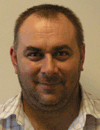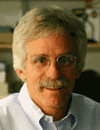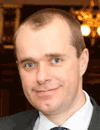08:00 | Registration |
|
Next Generation Biosensors and Biodetection Techniques |
| |
09:00 |  | Keynote Presentation Capacitive Immunosensors – A Tool for Detection Where Sensitivity of Conventional ELISA is Not Sufficient
Bo Mattiasson, Professor, Lund University, Sweden
|
|
09:30 | Electrochemical and Optical Multiple Parameters Genosensors: Tools for Disease Predisposition Analysis
Valerio Beni, Assistant Professor, Biosensors & Bioelectronics Centre, Linkoping University, Sweden
In this seminar the development and application of an electrochemical and of a fluorescence genosensors, both for the low to medium resolution typing of HLA genes associated to Coeliac disease, will be presented. |
10:00 | Optical Resonator-Based Biosensors: Plasmonic Enhancements for Label Free Single Molecule Detection
Frank Vollmer, Principal Investigator, Max Planck Institute for the Science of Light, Germany
Whispering Gallery Mode (WGM) biosensors and optical-resonator derivatives have emerged as the most sensitive microsystem biodetection technology that does not require chemical amplification or labeling of the analyte. To achieve the ultimate goal of label-free single molecule detection physical mechanisms are required to boost current sensitivity levels. I will present a mechanism based on plasmonic enhancement of WGM for ultra sensitive molecular detection on an integrated platform. |
10:30 | Coffee Break and Networking in the Exhibition Hall |
11:15 | Stimuli-Responsive Materials – Opening the Way to Advanced Fluidic Platforms for Future Autonomous Chemo/Bio-Detection Systems
Dermot Diamond, Professor, Principal Investigator, Insight Centre for Data Analytics, National Centre for Sensor Research, Dublin City University, Ireland
In this presentation, I will identify the key issues that are inhibiting the integration of chemo/bio-detectors and sensors into the communications infrastructure that underpins the emergence of wireless sensor networks (WSNs). In particular, the importance of microfluidics for enabling in-situ advanced sample handling in autonomous analytical instruments will be emphasised. |
11:45 | Transdermal Monitoring and Biosensors'
Patricia Connolly, Vice Dean Research, Strathclyde University, United Kingdom
The advantages and disadvantages of transdermal monitoring combined with biosensors for a minimally-invasive diagnostic approach will be discussed. |
12:15 | Lunch and Networking in the Exhibition Hall |
13:30 | Poster Session |
14:15 |  | Keynote Presentation Next Generation Biosensors and Biodetection Technologies
Jeff Newman, Programme Director, Cranfield University, United Kingdom
|
|
14:45 | “Contactless” Impedance Analysis for Real-Time Cell Monitoring.
Tim Cox, Research Director, Institute of Bio-sensing Technology, University of West England, United Kingdom
Early detection of cytotoxicity can be detected by continuous monitoring of cells growing in a standard tissue culture plates using external electrodes to determine changes in the cells’ electrophysiological state. |
15:15 | Coffee Break and Networking in the Exhibition Hall |
16:00 | Label-Free Pathogen and Metabolite Detection Using an Organic Electrochemical Transistor
Roisin Owens, Associate Professor, Ecole Nationale Supérieure des Mines de St Etienne, France
The organic electrochemical transistor is a new technology that will permit the development of low cost sensors for rapid and label-free detection. By integrating withcells or enzymes we are developing highly sensitive sensors that permit pathogen and metabolite detection. |
17:00 | Highly Sensitive and Rapid Magnetic Biosensors
Wendy Dittmer, Principal Scientist, Philips Research, United Kingdom
We present a handheld integrated testing technology that is able to perform a multiplex of sensitive, high performance quantitative assays in parallel from a single finger-prick sample. The recently developed biosensor employs precisely actuated magnetic particles and a compact optical imagining technique. |
17:30 | Drinks Reception |



